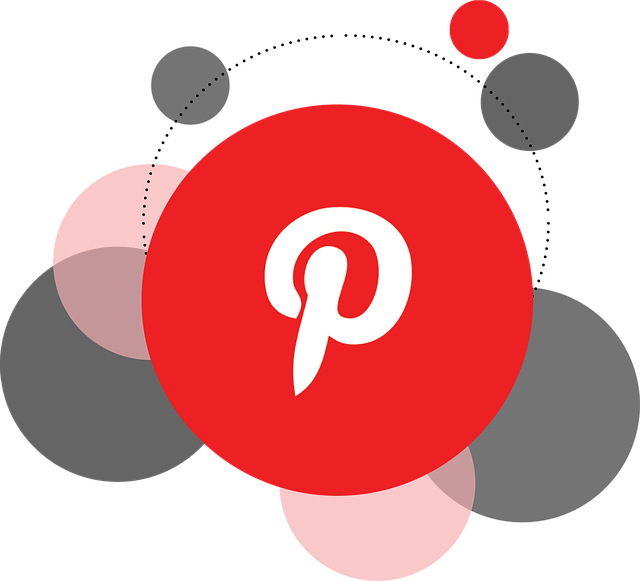
Image by kirstyfields from Pixabay
Most people probably associate Pinterest with 40-year-old mothers seeking home decorating ideas and cooking recipes. Brands believe that Pinterest is best for marketing visually appealing products desired mostly by women in their 30s and 40s.
But public relations and marketing experts familiar with Pinterest say the social platform can provide important public relations benefits. Many types of businesses can benefit from its expanding user base. Pinterest boasts more than 400 million monthly active users. While women still comprise 60% of its user base, men, millennials and Generation Z members are driving much of its growth. By comparison, Facebook has 2.7 billion monthly active users and Instagram has 1.1 billion.
What Pinterest lacks in numbers it makes up in strong purchase intent of its users, known as pinners. Citing Nielsen research, Pinterest says 98% of users report trying new products they find on the platform, compared to an average of only 71 percent across other social media platform. Pinterest serves as both a social media site and an ecommerce platform.
While it’s true that cooking, fashion, and home improvement projects are the most popular topics, many types of brands, even B2B firms, can gain quality traffic, engagement and exposure on Pinterest, proponents say. As a popular ecommerce platform, Pinterest offers great ROI potential: Many users shop and research products on the platform. Some compare Pinterest to a virtual bulletin board. Users post, or pin, images to their boards. Users can follow all of another user’s boards or only certain boards.
A Platform for PR Exposure & ROI
PR and social media experts offer these recommendations to promote your brand on Pinterest.
First cover the basics. Install the Pinterest Save button to your website and create a Pinterest business profile. The About You section limits you to 160 characters, so make each character count and include keywords.
Understand the parameters for image sizes. Importantly, Pinterest limits the width of images but not the length, allowing you to take advantage of skyscraper images, writes Lisa Buyer, a social media and PR consultant, for Search Engine Journal.
Storytelling. Take advantage of one of PR’s main strengths: storytelling. Tell a story with a series of pictures. Pin customer stories on your Pinterest boards. “Pinterest is an ideal platform for storytelling. And when it comes to PR, I strongly believe that the storytelling approach works much better than direct promotions,” says Smedio! founder and editor Douglas Idugboe.
Contribute to other boards. Like and share other users’ boards and items. “If you contribute, like and share other Pinterest users’ boards and items with similar interests, it serves as a passive PR tool for your business,” Idugboe says.
Use your blog. A firm selling software as a service, not a typical Pinterest business user, pinned images from its blog posts — sometimes its own infographics or images of products, sometimes images from its paid Shutterstock account. Pinterest became its top social referrer after just a month and drove about $50,000 in new revenue in four months. “This is a public relations dream—using social media to drive new visitors, which can be attributed to sales,” says Gini Dietrich, founder and CEO of Arment Dietrich.
Work with influencers. Influencer marketing on Pinterest offers substantial potential for many B2C brands. However, brands used to Instagram or Facebook may need to adjust their approach, advises Tuiana Banz, product marketing manager at SEMrush. Focus on the quality and targeting of the pins rather than volume and consider producing more video-based content. Understanding the posting habits of top pinners can help improve outreach strategy for influencer marketing campaigns.
Augment PR with advertising. Although PR pros traditionally concern themselves with earned media, barriers between PR, marketing and advertising have greatly diminished. Taking advantage of promoted pins can improve overall results. Pinterest recently introduced new tools for businesses to promote their products, for merchant storefront profile & discovery, catalog updates, and automatic bidding for shopping, and enhanced conversion analysis.
Optimize for search. Include search engine optimization (SEO) in your Pinterest’s strategy, recommends Ronn Torossian, EO of 5wpr. Conduct keyword research. Research shows that the most popular keywords are dinner recipes followed by quotes, keto recipes, and hairstyles. Top keywords are generally related to recipes, beauty and fashion, home décor, and DIY. Consider including holidays, seasons and life events in keyword phrases and words like “ideas,” “healthy,” and “relationship goals.”
Measure it. Track and measure the website traffic from Pinterest to quantify your efforts. Regularly review and assess results in order to make adjustments when necessary. Take advantage of Pinterest’s analytics tool, and combine data into an integrated media measurement dashboard for a comprehensive view of PR and marketing campaigns.
Bottom Line: Public relations professionals can increase awareness of their brands and its products on Pinterest. Even businesses that don’t market products to women can boost sales through the platform’s virtual bulletin boards. While Pinterest is similar to other social media networks, it holds key differences that PR pros must master in order to succeed.
This post was first published on May 4, 2018, and updated on Nov. 10, 2020.
Schedule a Free Online Demo of the Glean.info Media Monitoring & Measurement Dashboard
William J. Comcowich founded and served as CEO of CyberAlert LLC, the predecessor of Glean.info. He is currently serving as Interim CEO and member of the Board of Directors. Glean.info provides customized media monitoring, media measurement and analytics solutions across all types of traditional and social media.




